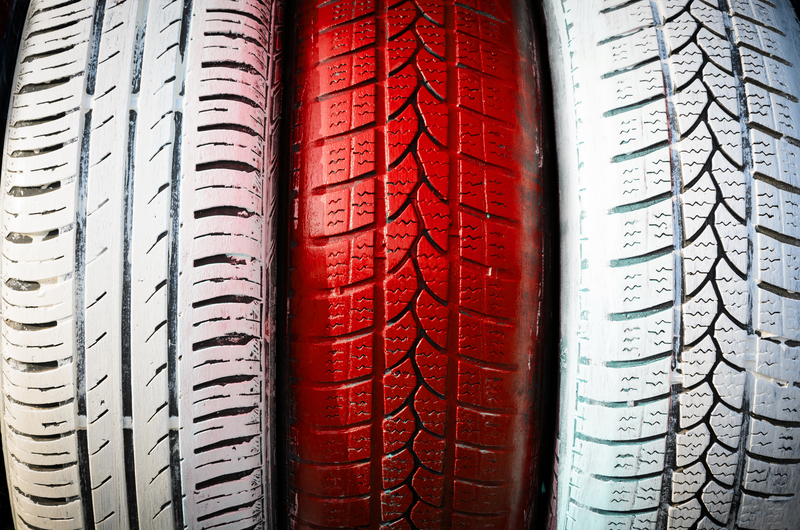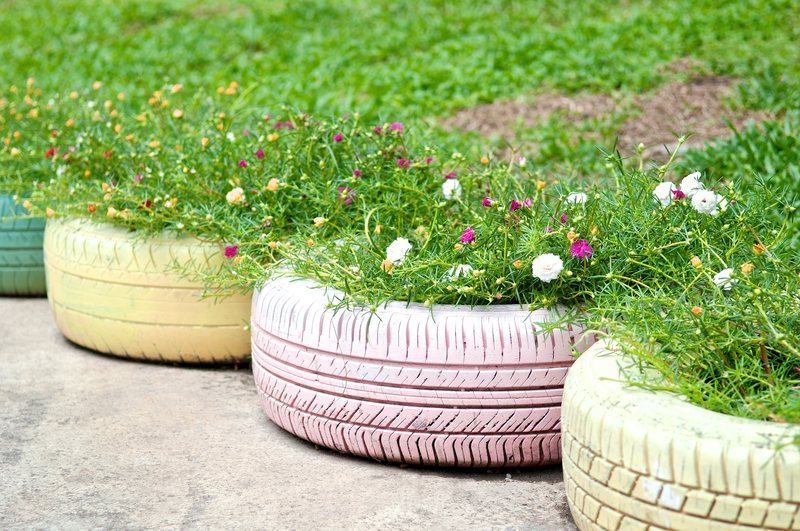Proper Practices for Environmentally Responsible PPE Waste Disposal
Personal Protective Equipment (PPE) has become an essential part of everyday life, especially since the COVID-19 pandemic. While PPE like masks, gloves, gowns, and face shields play a vital role in safeguarding health, their widespread use has had a significant environmental cost due to improper PPE waste disposal. It has become imperative now, more than ever, to adopt environmentally responsible PPE waste management methods to mitigate pollution and health hazards.
This comprehensive guide will walk you through the best practices and sustainable strategies for PPE waste disposal that minimizes ecological footprints and promotes a healthier planet.
Why Environmentally Responsible PPE Waste Disposal Matters
PPE waste comprises millions of single-use items that, if disposed of irresponsibly, can:
- Pollute water bodies and oceans, posing threats to marine life.
- Release microplastics and toxic chemicals into the environment.
- Clog sewage and drainage systems, contributing to urban flooding.
- Exacerbate the burden on landfills and waste management systems.
- Pose health risks to sanitation workers and wildlife.
Proper disposal of PPE waste helps prevent these environmental threats and ensures the safety and well-being of both humans and ecosystems.

Types of PPE Waste and Their Environmental Impact
Common PPE Types
- Masks (surgical, N95, fabric-based)
- Gloves (latex, nitrile, vinyl)
- Face shields and goggles
- Protective gowns and aprons
- Shoe covers, caps, and other medical apparel
Most single-use PPE items are made from plastics such as polypropylene and polyvinyl chloride, which do not biodegrade for hundreds of years. Incorrectly discarded PPE can end up in natural habitats, releasing microplastics and entering the food chain, endangering animals and potentially humans.
Principles of Environmentally Responsible PPE Waste Disposal
1. Segregation at Source
One of the most crucial steps in responsible PPE disposal is segregating PPE waste from other types of waste. Mixed waste complicates recycling and processing, so it's vital to:
- Use dedicated PPE disposal bins, clearly labeled for easy identification.
- Avoid mixing PPE with recyclable or organic waste.
- Encourage segregation in households, workplaces, and public places.
2. Safe Handling and Containment
PPE waste can be contaminated, especially from medical or high-risk environments. Proper handling includes:
- Wearing gloves and masks when handling used PPE.
- Placing contaminated PPE in strong, leak-proof bags or containers.
- Labeling bags as "PPE Waste" or "Biohazard" where appropriate.
- Ensuring containers are sealed tightly before transportation or disposal.
3. Following Local Guidelines and Legislation
As regulations vary, be sure to:
- Stay updated on the PPE waste management protocols issued by local health and environmental authorities.
- Adhere to hospital or institutional PPE disposal procedures for medical settings.
- Comply with waste transport and disposal standards for hazardous materials.
Methods of Environmentally Responsible PPE Waste Disposal
1. Incineration in Controlled Environments
Incineration is a widely used method for disposing of infectious PPE waste. Modern, energy-efficient incinerators equipped with pollution control devices can reduce hazards posed by pathogens and minimize emissions. However, open burning should be strictly avoided due to resultant air pollutants and dioxins.
2. PPE Waste Autoclaving
Autoclaving uses high-pressure saturated steam to sterilize contaminated PPE, rendering it safe for landfilling or further processing. It's effective and environmentally safer than uncontrolled burning.
3. Landfilling with Precautions
Landfilling is considered for PPE waste that cannot be recycled or efficiently incinerated. Always ensure the landfill is engineered, lined, and monitored to prevent leachate or groundwater contamination.
4. Sustainable Recycling Initiatives
Certain types of PPE can be recycled through specialized programs. For instance:
- Some companies offer closed-loop recycling for single-use masks and gloves.
- Plastic face shields and goggles are often accepted at plastic recycling facilities.
- Programs like TerraCycle have developed PPE recycling boxes for collection and processing.
NOTE: Never place contaminated PPE in home recycling bins as they can endanger workers and contaminate recyclables.
Best Practices for PPE Waste Disposal in Different Settings
Healthcare Facilities
- Follow hazardous biomedical waste protocols at all stages: use red or yellow color-coded bags for PPE (as per local statutes).
- Arrange regular collection by certified waste management companies.
- Record PPE waste quantities for monitoring and regulatory compliance.
- Ensure waste handlers are adequately protected and trained.
Households
- Collect used PPE--like masks and gloves--in a designated, leak-proof bag or container.
- Tie the bag securely before placing it in the trash. Prefer bags labeled as PPE or hazardous waste.
- Wash hands thoroughly after handling used PPE.
- If available, use PPE-specific collection bins in public spaces, pharmacies, or community centers.
Workplaces and Public Spaces
- Install clearly marked PPE disposal stations.
- Provide instructions for proper disposal procedures--visual aids are helpful.
- Arrange regular waste pick-up in collaboration with municipal authorities or commercial waste services.
- Include proper PPE disposal as part of workplace health and safety training.
Events, Schools, and Large Venues
- Plan for increased PPE waste in advance.
- Ensure adequate supply of color-coded PPE waste bins at strategic locations.
- Appoint staff or volunteers for waste monitoring and management during and after the event.
Cutting-Edge Innovations in PPE Waste Reduction and Reuse
The pandemic has spurred new eco-friendly approaches, including:
- Biodegradable and compostable PPE: Scientists are developing masks and gloves from materials like polylactic acid, cellulose, and bamboo fibers, reducing long-term environmental impacts.
- Reusable PPE: Using washable cloth masks, face shields, and gowns where appropriate dramatically reduces waste.
- PPE sterilization technology: Ultraviolet germicidal irradiation (UVGI), hydrogen peroxide vaporization, and ozone are being used to sterilize PPE for safe reuse in healthcare.
Choosing innovative, sustainable products supports a circular economy and lessens the global PPE waste crisis.
How Individuals and Organizations Can Contribute
Individual Actions
- Use reusable PPE wherever permitted.
- Follow guidelines for household PPE disposal.
- Encourage local government and businesses to install PPE waste bins in your community.
- Avoid littering; never discard PPE in open environments.
Organizational Responsibilities
- Engage professional waste management firms for handling bulk PPE waste.
- Implement employee training on correct segregation and disposal methods.
- Adopt greener procurement practices by prioritizing eco-friendly or reusable PPE supplies.
- Develop clear internal policies and accountability mechanisms.
Case Studies: Successful PPE Waste Management Practices
Case Study 1: Hospitals in Europe
Many European hospitals adopted color-coded bins, staff training, and autoclaves for PPE waste treatment during the pandemic. These measures reduced contamination incidents and streamlined waste flows, making them models for sustainable PPE disposal worldwide.
Case Study 2: TerraCycle PPE Zero Waste Program
TerraCycle, a leading recycling innovator, offers special boxes for collecting masks, gloves, and related PPE. These are picked up and processed in dedicated facilities, ensuring maximum material recovery and responsible disposal.
Case Study 3: University Initiatives
Several universities introduced biodegradable mask trials alongside public education campaigns, significantly lowering single-use plastic PPE consumption and teaching students about environmental responsibility regarding PPE waste.
Common Myths About PPE Waste Disposal
- Myth: All PPE can go in regular recycling bins.
Fact: Contaminated PPE must not be placed in standard recycling to avoid jeopardizing waste handlers and contaminating the recycling stream. - Myth: PPE is too small to make a difference.
Fact: Billions of PPE items accumulate significant plastic pollution globally when improperly disposed of. - Myth: Burning PPE anywhere is safe.
Fact: Uncontrolled burning releases toxins. Only authorized incineration facilities with emission controls should be used.
Summary of Key Steps for Responsible PPE Waste Management
- Always segregate PPE waste from recyclables and household trash at the source.
- Use designated and clearly labeled bins or bags for collection.
- Avoid open burning; opt for professional incineration or autoclaving for contaminated PPE.
- Participate in or advocate for PPE recycling programs if available in your area.
- Promote community awareness and education around sustainable PPE disposal practices.

Conclusion: Our Role in Sustainable PPE Waste Practices
Environmentally responsible PPE waste disposal is not just a corporate or governmental concern--it is a shared duty of every individual, household, and organization. By adopting best PPE waste disposal practices, we can prevent the exacerbation of plastic pollution and safeguard both public health and the natural world. Whether at home, work, or in public spaces, making informed and conscientious choices about how we handle PPE has a powerful ripple effect.
Let's all contribute to a greener, healthier future by ensuring our PPE waste is managed with care, respect, and environmental stewardship.
FAQ: Environmentally Responsible PPE Waste Disposal
What is the best way to dispose of used masks and gloves at home?
Seal them in a bag, label as PPE waste, and place in the general waste--not recycling. Always wash your hands after handling.
Can PPE be recycled?
Some PPE, like certain face shields and unopened gloves, can be recycled through specialized programs, but never place used PPE in regular recycling bins unless your local program specifically allows it.
What happens if PPE waste is improperly disposed of?
Improper PPE waste disposal leads to plastic pollution, harms wildlife, clogs water systems, and poses health risks to humans.
Are there eco-friendly alternatives to single-use PPE?
Yes! Consider reusable cloth masks and biodegradable options where possible for a sustainable choice.
Take action now: Segregate, dispose of, and advocate for sustainable PPE waste solutions in your community.
